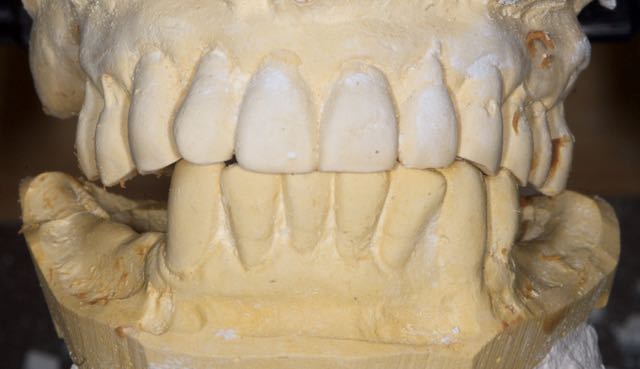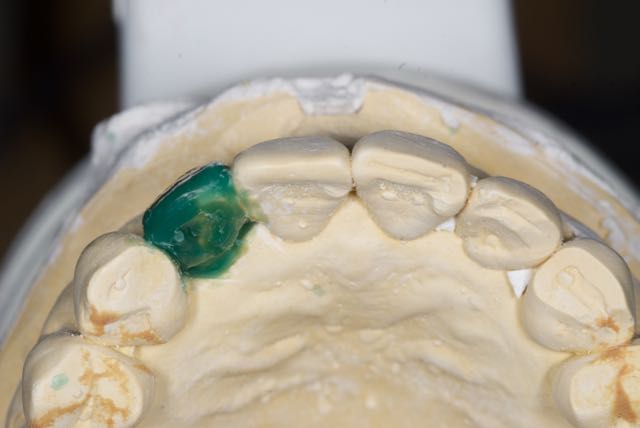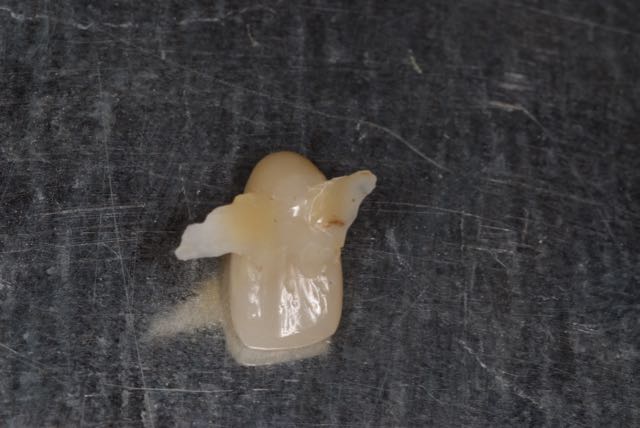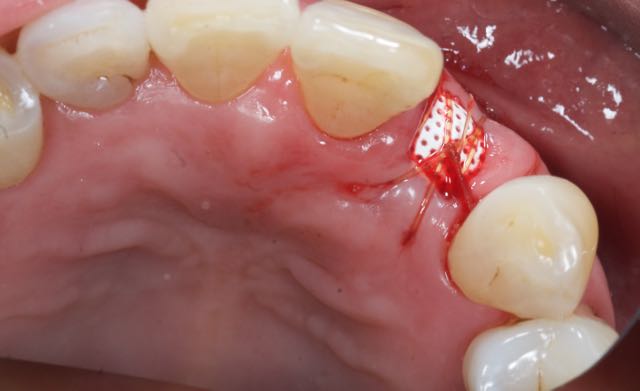Fixed restorations describe restorations that are permanently luted (cemented) or bonded the the mouth. These restorations can be smaller restorations that have a shape similar to a filling (inlay) or they can be extensive spanning multiple teeth (bridge), or something in between. In our office, we typically use ceramic materials for our fixed restorations. Ceramic materials, such as lithium disilicate or zirconia, offer high strength and high aesthetics that surpass traditional porcelain-fused-to-metal crowns.
Your Custom Text Here
This patient presented to our office with a very loose upper right lateral incisor. The patient was not experiencing significant pain or discomfort in the area, but she noted that the tooth was very loose and she was worried that it might come out on its own. The opposing tooth was a porcelain crown with a bite that was too high. The patient had noted this at the time of delivery, but assumed it would resolve on its own. When the patient would bite down, the lateral incisor would move noticeably. The lateral incisor was also rotated out of the ideal position.
After a consultation with the periodontist, it was determined that the tooth could not be saved and needed to be extracted. Impressions were taken of the upper and lower jaw and mounted on an articulator. The tooth was cut back, then re-created to more ideal contours in wax, which was then used as a guide for the shaping of the temporary restoration. The temporary restoration was fabricated using multiple shades of composite material in layers. At the time of delivery, the temporary tooth was cut back so that no pressure would be placed on the underlying bone graft. The temporary Maryland Bridge was bonded to the backs of the adjacent teeth using composite material. The bite was adjusted by shortening the overly long opposing porcelain crown of the mandibular right canine. The shade is a little light, but can be adjusted in the near future when there is greater stability in the bone graft site, if the patient desires.
This patient initially came to our office for a check-up and cleaning. Our x-rays showed a large cavity present on the lower left molar. In the initial photo, we can see that there is a large hole on the cheek side of the tooth. There is also a grayish-purplish color on the chewing surface. When we opened the tooth and removed most of the caries, we saw that the large visible hole on the cheek side was continuous with the cavity on the chewing surface of the tooth. A build-up of composite was placed inside the tooth where the cavity was and the tooth was prepared for a crown. We waited about one month to assess the vitality of the tooth. After confirmation that the tooth and nerve were reacting normally to stimuli the restoration was delivered. The final restoration is an E-max crown that was bonded on the tooth. The patient has been happy with the functional and aesthetic results of the final restoration, and happy to have been able to avoid having a root canal performed.
As an aside, we also cleaned out the pit and fissure caries on the tooth next door with minimal sacrifice in sound tooth structure, and restored the tooth with composite material.






















